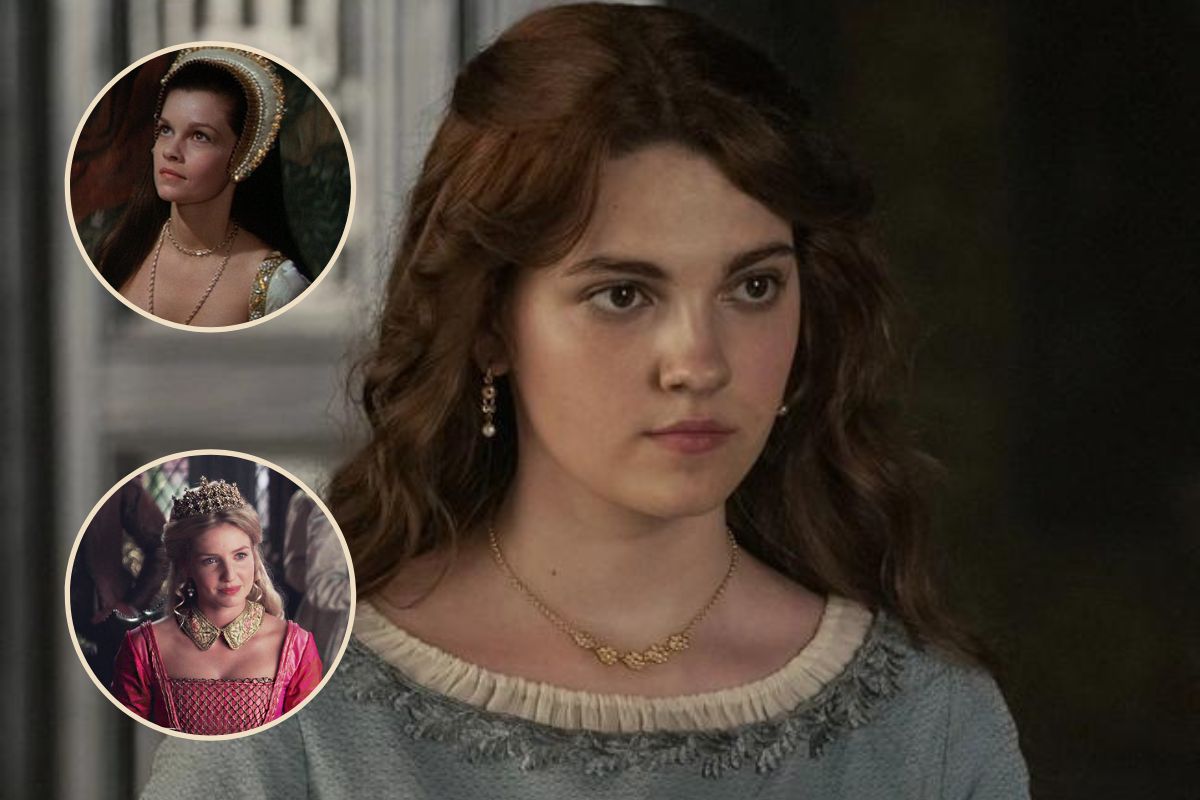‘House of the Dragon’: Alicent Hightower Is a Brilliant Mix of Jane Seymour and Anne Boleyn

With the first episode of HBO’s House of the Dragon spinoff prequel to Game of Thrones, I wrote about the comparisons between the fictional character Rhaenyra Targaryen and the historical figure Empress Matilda. This week, I want to focus on her best friend Alicent Hightower and the two women she resembles (in my opinion), Anne Boleyn and Jane Seymour—the second and third wives of King Henry VIII.
Spoilers for House of the Dragon episode 2: “The Rogue Prince.”
Alicent Hightower in House of the Dragon is a complex figure—the daughter of the Hand of the King, best friend of the Princess and heir, and Queen of Westeros. There have been those who compare Alicent to Game of Thrones’ Cersei, but I think that is an oversimplification. Alicent is shown, at the show’s outset, as a pious, caring, smart, and insightful person. We know that … drama will come soon.
Looking at influences within the world of A Song of Ice and Fire, there is a lot of both Sansa and Margarey in Alicent (and Margarey Tyrell was a Hightower on her mother’s side). Both are examples of feminine power, using their softness, beauty, and gentle image as part of building an image of trust. Thankfully, unlike with Game of Thrones, we see House of the Dragon show the power of this approach without making Alicent a hyper-sexualized figure or totally naive. While her father, Otto Hightower, is making sure to put his daughter in the line of sight of the newly widowed King Viserys, it is she who makes gestures and gives advice that lifts King Viserys’ spirit and accidentally elevates her to queen.
Well … “accidentally.”
When it comes to Anne Bolyen and Jane Seymour, history has placed them as rivals, but they have more in common than what dramas would have you think. Both were daughters of nobles who were pushed into the arms of an older king. While House of the Dragon at least has our queen dead, so there is no Katherine of Aragon, what does become the issue is a young powerful woman being pushed to deliver male heirs. Without getting too much into spoilers, the preview of episode 3 shows that Alicent will have a son, Aegon.
Like Jane Seymour, Alicent is a traditional beauty of a calm temperament who will deliver the male heir long awaited by the King. She will try to be a good stepmother in her own right, care for Rhaenyra as best she can. But there is also something traditional about Alicent, especially now as queen. She is working not only for her own ends, but that of her family and her son.
The Anne Bolyen comparison comes in there. Like Anne, Alicent will not be a passive player in the game. Now that audiences know that Alicent will become queen, the conflicts between herself and Rhaenyra that have been teased indicate that we are dealing with a new powerful figure. Something breaks between them, and it is not one-sided. Alicent combines the strength and will of these two historical women, wedded to a king due in part to the pressure of their fathers, and surrounded by factions that would see them replaced as easily as their arrived.
At this point in the series, I appreciate that we have this respect of traditional female politics that the original series didn’t get until much later, causing Sansa’s character to stagnate. With Alicent and Rhaenyra, we may get a better conflict than the half-assed one between Dany and Sansa in the final season of Thrones. The stakes feel more real and relevant to who these women are: survivors within the limitations of the patriarchy.
Emily Carey, who plays Alicent, spoke with EW about the queer subtext and then, later, broken bond between her character and Rhaenyra:
As a self-identifying queer woman, Carey picked up on those undertones in the script. She confirms it’s something she and Alcock discussed with each other. Ultimately, it speaks more to the specificity of relationships girls can have that boys are discouraged from.
“Fourteen-year-old girls are allowed to change in front of each other when boys aren’t, and you go to the bathroom together. Just like this tactile closeness and this emotional vulnerability that you share with one another, it’s almost like having a partner,” Carey says. “You want to be with that person all the time, and all in all just encapsulating you with love. You just want to love that person so deeply, and you think your best friend of 14 is going to be your best friend for the rest of your life. It does toe the line between platonic and romantic. But I also think, at 14, you don’t know what those words mean. You don’t know what the feelings mean. It’s just love. That’s all it is. Whether it’s friendship or more than that, I think it’s up to how you want to see it, but it was talked about for sure. As a viewer, I like to read into it because I also think that it makes the demise of the friendship more heartbreaking to watch… I would love if they were a little bit fruity, but it’s up to you how you want to read it. It’s just a beautiful bond between two young girls, let’s put it that way.”
What do you think of Alicent becoming queen? Does it change the way you think of the character?
(featured image: HBO/Showtime)
Have a tip we should know? tips@themarysue.com